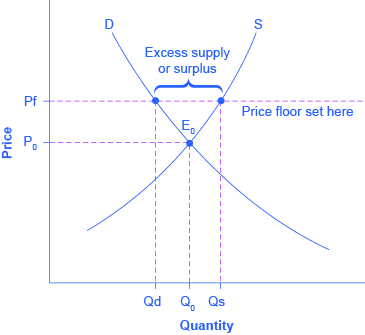National and local governments sometimes implement price controls legal minimum or maximum prices for specific goods or services to attempt managing the economy by direct intervention price controls can be price ceilings or price floors.
Price floors and ceilings quizlet.
Price floors and price ceilings are price controls examples of government intervention in the free market which changes the market equilibrium.
Surplus of 40 units.
In the 1970s.
Shortage of 50 units.
If a price ceiling were set at 12 there would be a.
Taxes and perfectly inelastic demand.
Shortage of 0 units.
Learn vocabulary terms and more with flashcards games and other study tools.
A price ceiling is the legal maximum price for a good or service while a price floor is the legal minimum price.
Percentage tax on hamburgers.
Final exam ch.
Example breaking down tax incidence.
But this is a control or limit on how low a price can be charged for any commodity.
Taxation and dead weight loss.
Surplus of 20 units.
The intersection of demand d and supply s would be at the equilibrium point e 0.
They each have reasons for using them but there are large efficiency losses with both of them.
For more detail on the effects price ceilings and floors have on demand and supply see the following clear it up feature.
Real life example of a price ceiling.
Price ceilings and price floors.
Price and quantity controls.
Learn 100 online from anywhere in the world.
It is legal minimum price set by the government on particular goods and services in order to prevent producers from being paid very less price.
If the price of butter increases then we would expect that the demand for margarine would fall.
Like price ceiling price floor is also a measure of price control imposed by the government.
A price floor example.
This is the currently selected item.
The opposite of a price ceiling is a price floor which sets a minimum price at which a product or service can be sold.
The effect of government interventions on surplus.





























